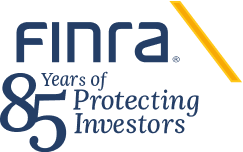Summary
In August 2019, FINRA launched a retrospective review that, among other things, sought stakeholders’ input on the effectiveness of Rule 3240 (Borrowing from or Lending to Customers).1 Based on feedback received during the review, FINRA is proposing amendments to Rule 3240 to:
emphasize that the rule generally prohibits registered persons from entering into borrowing or
Staff in FINRA’s Regulatory Review and Disclosure unit must review and approve all proposed names for firms applying for FINRA membership and for current FINRA member firms seeking a name change. A firm may reserve a name by submitting a completed Firm Name Reservation Request Form.Note: FINRA does not research names for use as Doing Business As (DBA) in states, and the Firm Name
Rule 606 of Regulation NMS requires broker-dealers to disclose information regarding the handling of their customers’ orders in NMS stocks and listed options. These disclosures are designed to help customers better understand how their firm routes and handles their orders, assess the quality of order handling services provided by their firm, and ascertain whether the firm is effectively managing potential conflicts of interest that may impact their firm’s routing decisions.
Each member shall develop and implement a written anti-money laundering program reasonably designed to achieve and monitor the member's compliance with the requirements of the Bank Secrecy Act (31 U.S.C. 5311, et seq.), and the implementing regulations promulgated thereunder by the Department of the Treasury. Each member's anti-money laundering program must be approved, in writing, by a
The Books and Records topic of the 2024 FINRA Annual Regulatory Oversight Report (the Report) informs member firms’ compliance programs by providing annual insights from FINRA’s ongoing regulatory operations, including (1) regulatory obligations and related considerations, (2) findings and effective practices, and (3) additional resources.
Year 2000 Program Addresses Challenges Faced By Automated Systems
Members Be Advised: The year 2000 will be upon us in less than two and a half years, and, to be ready, all National Association of Securities Dealers, Inc. (NASD®) member firms must take action now to ensure that their automated systems will continue to operate successfully. The NASD has instituted a Year 2000 (Y2K) Program to
SUGGESTED ROUTING:*
Senior ManagementLegal & ComplianceOperations*These are suggested departments only. Others may be appropriate for your firm.
EXECUTIVE SUMMARY
On April 17, 1991, the Department of Treasury issued 56 FR 15529-15532 containing proposed amendments to 17 CFR Part 403 ("Protection of Customer Securities and Balances"). The proposal would implement a buy-
SUGGESTED ROUTING
Senior ManagementLegal & ComplianceOperations
Executive Summary
Schedule D and Schedule H of the NASD By-Laws require members to respond to regulatory requests for trading data by using a standardized automated format. In Notice to Members 93-26 (April 1993), members were urged to take immediate action to ensure the timeliness, accuracy, and completeness of
INFORMATIONAL
Taping Rule
Effective Date: October 14, 2002
SUGGESTED ROUTING
KEY TOPICS
Executive Representatives
Legal & Compliance
Operations
Senior Management
Rule 3010
IM-8310-2
Taping Rule
Executive Summary
On August 28, 2002, the Securities and Exchange Commission (SEC) approved amendments to NASD Rule 3010(b)(2), also known as the Taping Rule, and NASD
"Hello and good evening. I'd like to start by thanking you for being open to comments from retail traders. I am a retail trader from germany. I am not the most financially literate person in the room, as my experience investing has been limited to this year, but in that time I have made great strides in learning how our financial system functions. I parsed Regulatory Notice 21-19 myself
